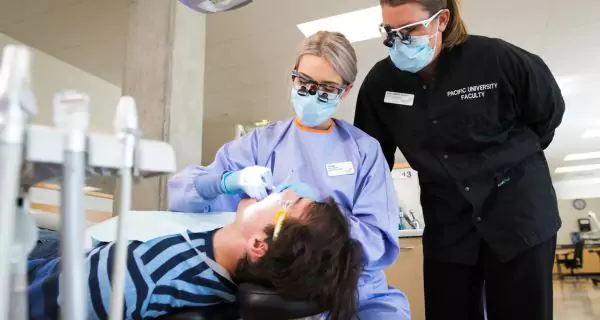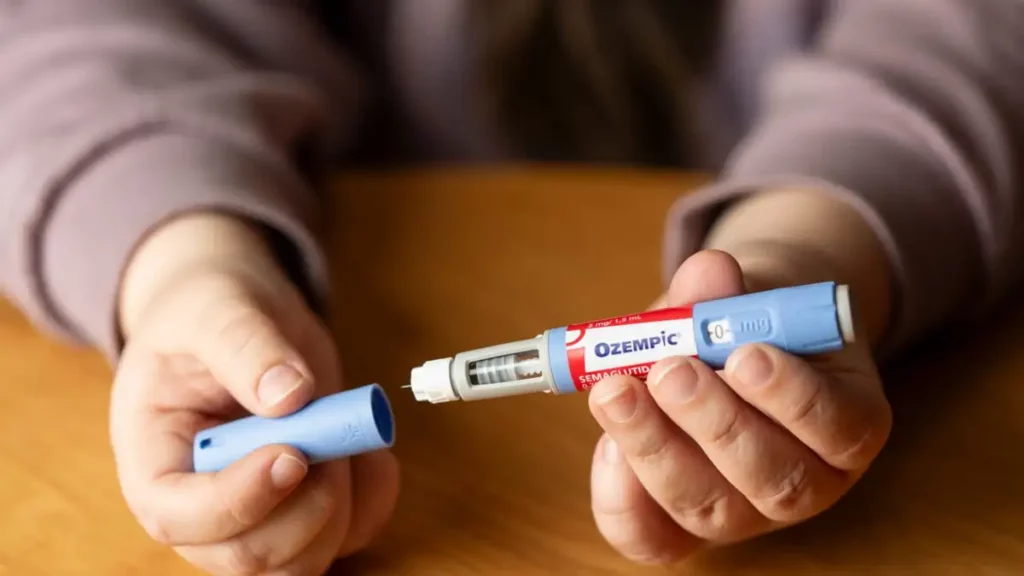Last Updated on: 10th December 2025, 07:22 am
Namely, mouth ulcer vs. canker sore. These conditions are quite common and can affect anyone at some point in their life, with a slightly higher prevalence among women. While they generally do not indicate a severe medical condition, they can cause considerable discomfort and pain. The mouth plays a crucial role in various fundamental activities like speaking, yawning, laughing, and eating. Hence, the presence of thrush, mouth ulcers, or canker sores can have a significant impact on people’s quality of life.
What are Canker Sores and Mouth Ulcers?
Mouth ulcers are painful sores that form inside the mouth and usually disappear after a few days without scarring. These can be multiple or appear in isolation.
In rare cases, multiple canker sores occur repeatedly and may be associated with a condition known as recurrent oral aphthosis or recurrent aphthous stomatitis. This requires diagnosis and specific medical management.
What is the Difference Between Mouth Ulcer vs. Canker Sore?
The terms “oral ulcer” and “oral thrush” are often used interchangeably. It is appropriate to clarify that canker sores are a type of oral ulcer that is not usually associated with trauma. When talking about oral ulcers, reference is usually made to the sores that form when the soft tissues of the mouth are injured by mechanical stimuli, such as aggressive tooth brushing or an object that lacerates the mucosa.
Now, although ulcers and mouth ulcers are differentiated by their origin, the management is usually the same for both conditions, so below, we will tell you everything you need to know about these injuries.
Where Do They Occur?
Oral ulcers or canker sores usually appear on the palate, tongue, inner part of the lips, or cheeks. Less commonly, they can also appear on the gums and pharynx. When they are very localized and isolated, it is common for them to be caused by trauma.
How Do They Look?
Ulcers or canker sores look like sores with a whitish, grayish, or yellowish center, with reddish edges. Its size can vary between 1 mm and 1 cm in diameter.
What are the Symptoms of Canker Sores?
Common symptoms of canker sores or canker sores include:
• The sensation of tingling or itching in the area, especially before its formation.
• Burning when eating acidic or salty foods.
• The appearance of one or several sores inside the mouth.
• Pain when brushing teeth.
• Swelling around the ulcers.
Other less common symptoms may include:
• Fever
• Difficulty feeding.
• Swollen lymph nodes.
What Causes Canker Sores or Mouth Ulcers?
Although some canker sores have obvious causes, these are not always clear. However, it is known that several factors can increase the probability of its appearance. The most frequent are:
• Hormonal changes.
• Nutritional deficiencies of iron, vitamins, and folic acid.
• States of stress or anxiety, which affect the immune system.
• Prosthetics, orthotics, dentures, or ill-fitting restorations.
• Allergic reactions to food, medicines, or oral hygiene products.
• Reactions to medical treatments, such as chemotherapy.
• Conditions that affect the immune system, such as HIV infections.
• Some diseases such as hematological alterations or autoimmune disorders.
Are canker sores and mouth ulcers contagious?
Unlike herpes lesions, which occur on the outside of the lips, canker sores and mouth ulcers are not contagious.
How to Prevent Ulcers and Canker Sores?
Although preventing canker sores is difficult, a few tips can help reduce your risk of getting them:
• Eat a balanced diet.
• Maintain good oral hygiene by brushing your teeth 3 times a day and flossing.
• Get regular dental checkups.
• If you have prostheses or orthodontic appliances that make you uncomfortable, tell your dentist to make the necessary adjustments.
• Adopt stress management techniques.
However, if canker sores or canker sores are related to an underlying health problem and are a recurring problem, it is important to see a doctor for medical treatment of the condition to prevent it from reoccurring.
How to Treat Ulcers or Canker Sores at Home?
Here are some tips and home remedies to help heal canker sores and canker sores:
• Use over-the-counter alcohol-free antiseptic rinses to keep the area clean.
• Avoid hard, acidic, or spicy foods, as these could cause further irritation.
• Rinse with warm water and salt or bicarbonate for 1 minute, 3 times a day.
• Place honey on the lesion, to stimulate healing.
To explore the most effective methods for managing canker sores at home, please refer to the following: Best Treatment for Canker Sores To Try at Home
When to Consult a Doctor?
Oral ulcers or canker sores usually disappear on their own without further complication. Seek medical or dental attention in any of the following cases:
• Ulcers lasting more than 3 weeks.
• Non-tender ulcers.
• Multiple thrush occurs with other symptoms, such as flu, fever, or diarrhea.
• Pain that does not stop with analgesics and that prevents a proper diet, especially in children, since if the pain makes it impossible to eat food, it may be necessary to administer nutrients and medications intravenously.
What is the Medical Treatment for Canker Sores and Ulcers?
Most of the time, these lesions do not require treatment, as they usually resolve on their own within 1 to 2 weeks. Faced with recurring or excessively painful canker sores, depending on the cause, a doctor may opt for one of the following options:
• Local anesthetics.
• Antiseptic rinses.
• Healing agents.
• Anti-inflammatory drugs.
• Modulating agents of the immune system.
• Nutritional supplements.
• Laser therapy.
Frequently Asked Questions
How can you distinguish between a canker sore and an ulcer?
Apart from their names, there is no difference between a canker sore and a mouth ulcer. Cankers are usually shallow, round or oval ulcers that come in various sizes. They may appear whitish or yellowish with a red border. Canker sores are often painful, causing difficulty in eating and speaking, and larger ones may take a while to heal.
How can you differentiate between a canker sore and other conditions?
While canker sores typically cause pain, oral cancer may or may not be accompanied by pain. Canker sores are always flat and typically have a white or yellow center, which turns gray as they heal. On the other hand, oral cancer lesions can be flat or raised and often appear white or red.
What are the potential consequences of not treating a canker sore?
Typically, canker sore pain tends to improve within a few days, and the ulcers usually heal on their own within two weeks, even without treatment. However, if you have a canker sore that persists for more than two weeks, it is advisable to schedule an appointment with your healthcare provider.
What are the various types of canker sores in the mouth?
Canker sores also referred to as aphthous ulcers, are painful sores with indentations that form inside the mouth. There are three main types: minor canker sores (the most frequent type), major canker sores (often observed in individuals with weakened immune systems), and herpetiform canker sores (which result in clusters of pinhead-sized lesions).
Share:
References
1. Canker sore (aphthous ulcer): What it is, causes & treatment. (Sep 6, 2022). Cleveland Clinic. Available from: https://my.clevelandclinic.org/health/diseases/10945-canker-sores
2. Healthdirect Australia. (2022). Mouth sores and ulcers – causes and treatments. Available from: https://www.healthdirect.gov.au/mouth-sores-and-ulcers
3. Mouth ulcer. (Sep 7, 2021). Cleveland Clinic. Available from: https://my.clevelandclinic.org/health/diseases/21766-mouth-ulcer
4. Plewa, M. C., & Chatterjee, K. (2022). Aphthous Stomatitis. StatPearls Publishing.Available from: https://www.ncbi.nlm.nih.gov/books/NBK431059/#:~:text=Treatment%20%2F%20Management&text=First%2Dline%20treatment%20of%20major,steroid%20injection%2C%20such%20as%20triamcinolone.
5. Barrons R. W. (2001). Treatment strategies for recurrent oral aphthous ulcers. American Journal of Health-System Pharmacy: AJHP: official journal of the American Society of Health-System Pharmacists, 58(1), 41–53. Available from: https://pubmed.ncbi.nlm.nih.gov/11194135/
6. Plewa, M. C., & Chatterjee, K. (2017). Aphthous stomatitis. Available from: https://www.ncbi.nlm.nih.gov/books/NBK431059/#:~:text=Treatment%20%2F%20Management&text=First%2Dline%20treatment%20of%20major,steroid%20injection%2C%20such%20as%20triamcinolone.
-
Nayibe Cubillos M. [Author]
Pharmaceutical Chemestry |Pharmaceutical Process Management | Pharmaceutical Care | Pharmaceutical Services Audit | Pharmaceutical Services Process Consulting | Content Project Manager | SEO Knowledge | Content Writer | Leadership | Scrum Master
View all posts
A healthcare writer with a solid background in pharmaceutical chemistry and a thorough understanding of Colombian regulatory processes and comprehensive sector management, she has significant experience coordinating and leading multidisciplina...




















